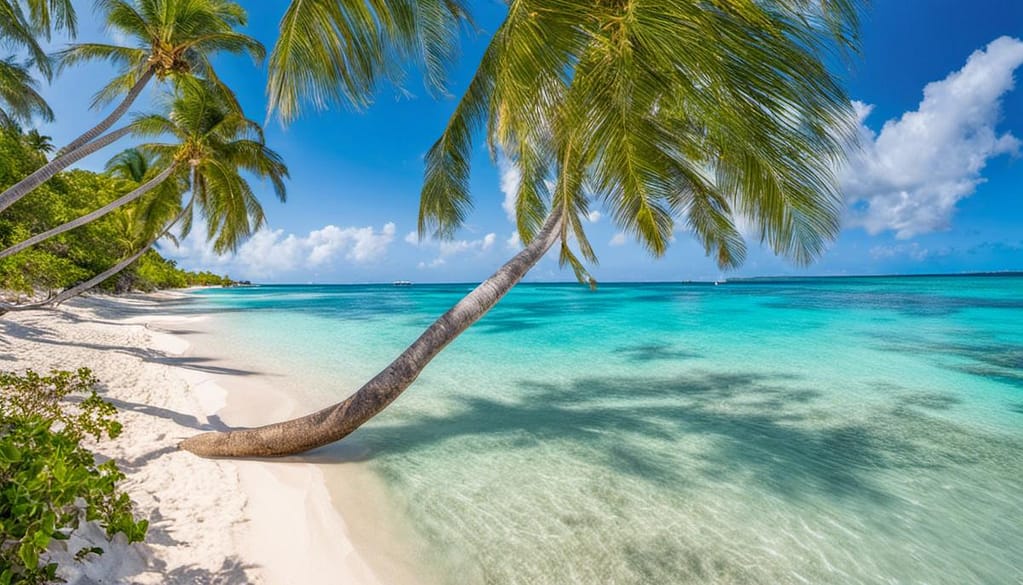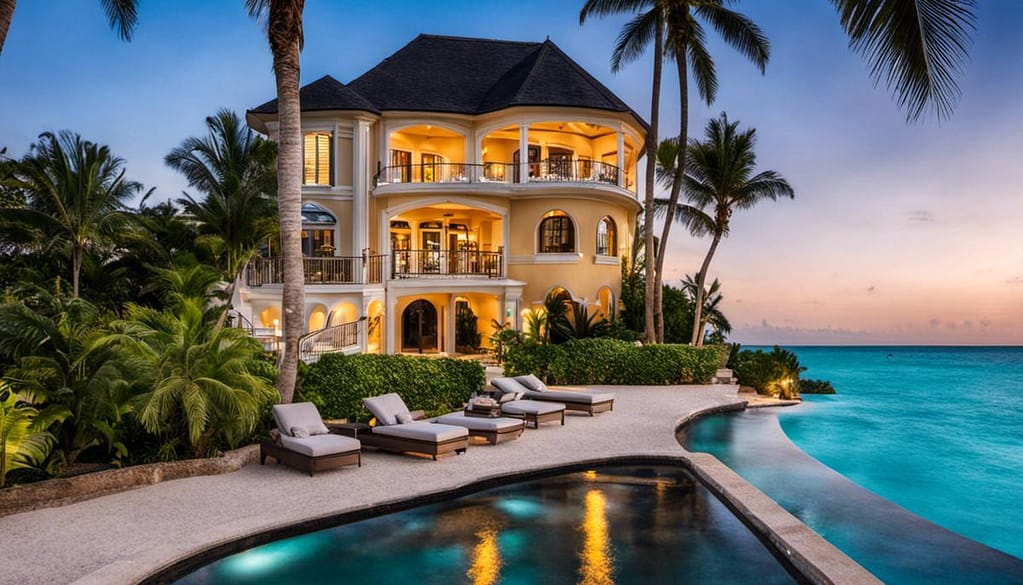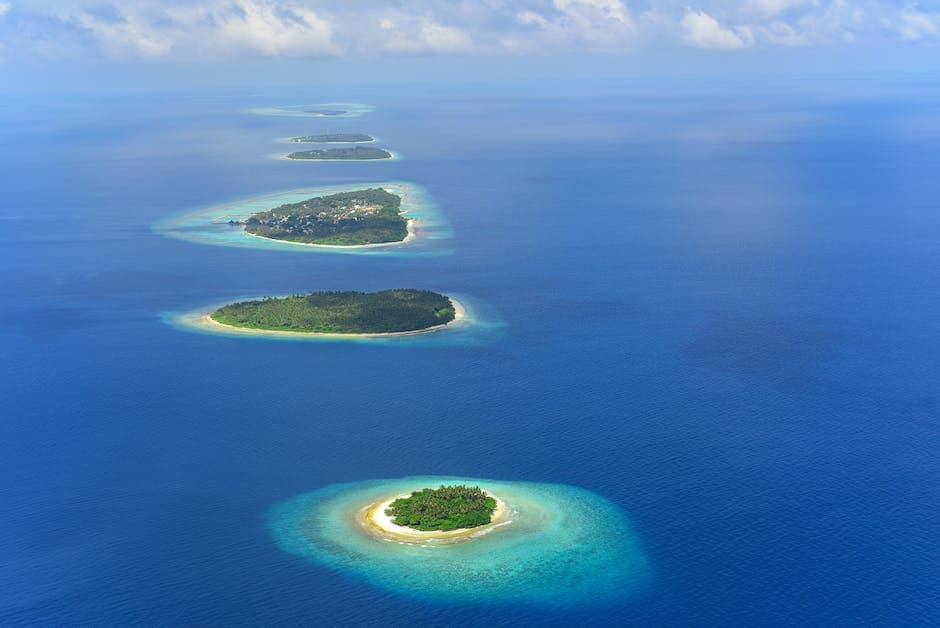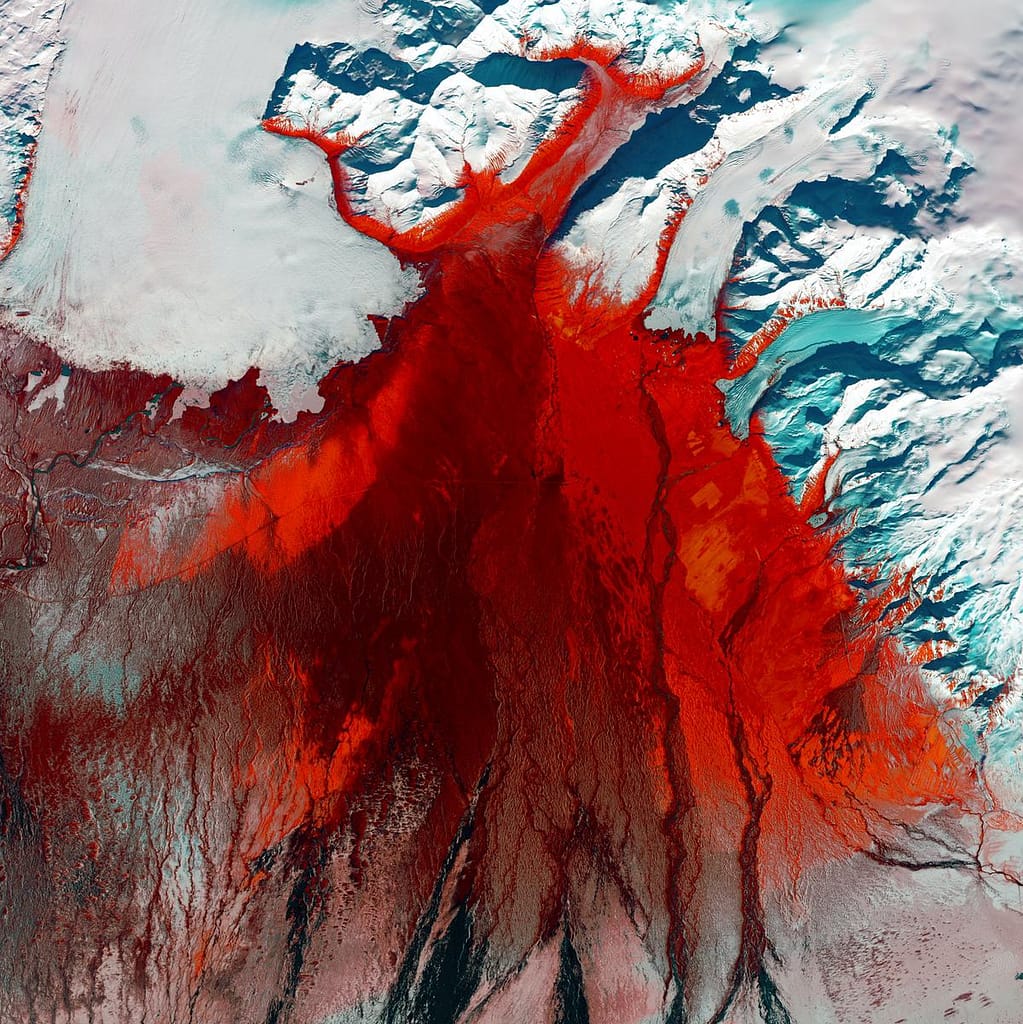Welcome to the jewel of the Caribbean – the sun-soaked and splendid Cayman Islands. This comprehensive guide aims to illuminate the richness and the charm that the islands stand to offer. Unearth the logistical details of reaching these pristine beaches from any part of the globe, explore the comprehensive range of comfortable accommodations, discover the tantalising local cuisine on offer, unravel the treasure-trove of activities waiting for you, and educate yourself about the culture that deeply roots this paradise for the respectful traveller. Also, let us take you through practical budget-focused advice to ensure more enjoying and less worrying about costs. Let’s embark on your dream holiday, step by step.
Getting There and Transportation
Getting to the Cayman Islands
There are several methods of reaching the Cayman Islands, depending on your location. From the United Kingdom, direct flights are limited; most travel options require at least one stopover, often in Miami. Similarly, for visitors hailing from Asia or Australia, travel invariably includes one or two stopovers, commonly in major American airports, such as John F. Kennedy International Airport or Los Angeles International Airport, before moving onto the Cayman Islands. The estimated flight time from London to Grand Cayman is about 12 hours, including the stopover.
Popular carriers for these routes include British Airways, American Airlines, and Cayman Airways. It’s worth mentioning that Cayman Airways often offers direct flights to and from Miami, Tampa, and New York as well as Havana, ensuring good connectivity for North American and Latin American travellers.
Despite being a collection of islands, connectivity to and from the Cayman Islands is well established. Various cruise lines also service the islands, including Disney Cruise Line and Royal Caribbean Cruise Line. For those who prefer more private transportation, yacht charters are readily available, although this would typically be a more luxurious and expensive option.
Exploring the Cayman Islands
Upon your arrival at the Cayman Islands, several modes of transport await you. You may decide to hire a car from familiar brands such as Avis or Budget to explore the paradise at your own leisure. Bear in mind, however, that traffic in Cayman Islands flows on the left side of the road — a British influence that right-side drivers may find particularly unusual.
For shorter commutes or those keen on minimising carbon emissions, bicycles present a worthwhile alternative. Be cautioned that the tropical sun may make even a seemingly mild cycling trip quite demanding.
Regular public buses provide an easy and cost-effective way to traverse Grand Cayman, although with a slightly flexible approach to punctuality. Taxis offer a more private mode of transport, priced accordingly. Please note, metered taxi fares are not prevalent in Cayman, and most cabs operate on a fixed price basis.
Inter-island connectivity is maintained by ferry services, such as the one operating between Little Cayman and Cayman Brac. This offers both a practical means of transport and an opportunity to witness the splendour of the Caribbean sea first-hand.
Finally, it’s useful to remember that landmarks often serve as address locators in Cayman, which can initially seem bewildering. Regardless, navigating around the islands remains reasonably simple and is facilitated by a range of transport options to suit all preferences and budgets.

Accommodation and Dining Spots
A Spectrum of Accommodation Choices
Catering to the varied needs and finances of travellers, the Cayman Islands boasts a broad spectrum of accommodation options. There’s no shortage of high-end, star-rated hotels, often situated a mere stone’s throw away from the unblemished white sandy beaches. These hotels exemplify luxury, with their grand rooms, plush furnishings and unrivalled views of the sparkling Caribbean Sea.
Nestled throughout the islands, you may come upon charming guesthouses and bed and breakfasts run by locals. These accommodations offer a warmth and comfort akin to a home away from home. Travellers seeking a more secluded and self-contained getaway can find numerous beachfront villas and condominiums, ideal for group trips or family vacations.
Exploring Caymanian Cuisine
Dining in the Cayman Islands is an adventure in itself. With a multitude of dining spots scattered across Grand Cayman, Cayman Brac, and Little Cayman, one has ample opportunity to savour both local and international cuisines. From high-end restaurants offering gourmet dishes to charming, seaside shacks serving up mouthwatering, traditional fare, the delectable food scene on the islands is truly diverse and delectable.
Local Caymanian cuisine is mainly centred around seafood, with delicacies such as conch stew, turtle meat dishes, and the iconic Cayman-style snapper gracing the menus of many local eateries. However, the culinary influences of the Caribbean and wider world have also seeped into the islands, resulting in a delightful mélange of tastes.
Upscale dining options are plentiful, especially in George Town and along Seven Mile Beach, with prime steak, freshly caught seafood, and international delicacies being commonly served up. For an immersive experience, take a culinary journey through the various districts, exploring local, family-run ‘cook shops,’ and try island favourites like jerk chicken, fried plantains, and ‘heavy cake’, a traditional dessert that is truly Caymanian.
Food festivals are also a staple on the islands, with the annual Cayman Cookout and Taste of Cayman offering a chance for food lovers to sample a vast variety of dishes whilst basking in the festive atmosphere.
Regardless of whether you’re after a peaceful sanctuary or a culinary adventure, the Cayman Islands provide a multitude of attractive choices. Seamlessly balancing local businesses and international chains, these islands maintain their unique allure while simultaneously offering contemporary conveniences. Indeed, the warm and welcoming ‘Caymankind’ vibe is palpable throughout the islands.

Sightseeing and Activities
Unspoilt Natural Beauty
The Cayman Islands are brimming with natural treasures that will undoubtedly enthral any nature lover. Among these is the mesmerising Seven Mile Beach, celebrated for its vast expanse of powdery white sands and beautiful translucent waters. Here, a wide assortment of sea-based activities, such as snorkelling, stand-up paddle boarding, or simply basking in the glorious sunshine, are available for your enjoyment.
Additionally, you have the Crystal Caves located in the heart of Grand Cayman’s lush rainforest. These spectacular subterranean caverns boast gigantic crystal formations and unusual geological structures. The caves are beautifully adorned by stalactite and stalagmite crystal formations, creating an otherworldly experience that’s sure to captivate any visitor’s imagination.
For marine life enthusiasts, a visit to Stingray City is a must. This famed marine attraction provides a unique opportunity to swim and engage closely with the friendly southern stingrays that gather at this sandbar.
Historical Sites
Cayman Islands offer a rich selection of historical sites each with its own unique story. Pedro St. James is a remarkable 18th-century site also known as the “birthplace of democracy in the Cayman Islands.” Boasting lovely gardens and an impressive three-story building, it offers an immersive view into the lifestyle of the island’s early inhabitants.
Additionally, you can dive into the history of the island at the Cayman Islands National Museum, located in a 19th-century building in George Town. The museum showcases a variety of exhibits, providing invaluable insights into the island’s history, culture, and natural environment.
Activity and Sightseeing Opportunities
As anticipated, the Cayman Islands present a plethora of activities suitable for all. Those possessing a taste for adventure can find great pleasure in full-day boat tours. These excursions provide the opportunity to explore the islands’ remarkable marine life, pay a visit to the stingray city, or simply bask in the mesmerising beauty of the coastal landscape.
Scuba diving and snorkelling are easily accessible, thanks to the sparkling clear waters home to an array of sea life. One notable spot is the Cayman Wall located in Bloody Bay Marine Park, a magnificent underwater cliff studded with vibrant coral formations.
For those seeking relaxation, beach outings are ideal. Bask in the sun on impeccable sandy beaches, devour local cuisine or partake in a spirited game of beach volleyball.
Art admirers are also catered for, with art galleries amongst the attractions. The National Gallery of the Cayman Islands is a sight to behold, showcasing an extensive selection of both local and international art pieces.
For the culinary inclined, a gastronomic tour presents an unforgettable experience. Indulge in the country’s cuisine scene, sampling a variety of Caribbean flavours and gaining insights into their preparation.

Culture and Local Customs
A Distinct and Unifying Culture
Despite its compact size, the Cayman Islands parade a distinctive and vibrant culture eloquently echoing its enriched history. Throughout the years, this Caribbean gem has cultivated an identity thoroughly Caymanian, by successfully integrating influences from various cultures. It’s the harmonious blend of legacies from Africa, Central America, England, and Scotland that forms the backbone of this cultural mosaic.
Language and Communication
English is the official and most widely spoken language on the Cayman Islands, spoken with a naturally light and melodic accent that resonates with its Caribbean roots. Furthermore, Cayman Islands’ Creole, a blend of African and English languages, is spoken mainly among the local population. But fear not, even if you’re not yet familiar with this dialect, locals are typically overly friendly and patient, often eager to communicate with visitors and share their culture and local lore.
Cayman Islands’ Calendar of Festivals
One of the best reflections of the vibrancy and richness of the Cayman culture is the plethora of festivals that the Islands host throughout the year. The Cayman Carnival Batabano, a vibrant and colourful event held in May, is one of the most popular. This energetic festival is laced with traditional foods, lively music, and sensational costumes.
In November, the district of East End comes alive with the Pirates Week Festival. This eleven-day pirate-themed celebration brings the intricate history of the Islands to the fore, invading the land with warm camaraderie and historical re-enactments.
For poetry enthusiasts, the Gimistory International Storytelling Festival is a must-visit. Here, local and international performers take to the stage bearing folk tales from different corners of the world.
Adhering to Local Etiquette
Like many Caribbean cultures, the Cayman Islands embrace a laid-back attitude to life, often encapsulated by the phrase ‘Cayman-kind.’ This philosophy emphasizes respect, politeness, and a genuine enjoyment of life. As a visitor, it is important to show the same kind of respect towards local customs, language, and traditions.
For instance, beach attire is generally acceptable along the coastlines but is considered inappropriate in town centres, churches, or restaurants. Sunday is traditionally viewed as a day of rest, and as such, many businesses might be closed. In such cases, planning ahead for your itinerary or necessities is advisable.
Embracing Cayman Food Culture
In the Cayman Islands, food is not merely subsistence, it is a celebration of community and traditions. With the ocean’s bounty, seafood, particularly turtle and conch, features heavily in traditional Caymanian dishes. Exploring the local food scene, you’re bound to find the infamous ‘Cayman-style’ lobster – a deliciously local take on lobster, stewed with peppers, onions, and tomatoes.
Remembering to try the national dish, Turtle Stew, is a must – it’s a hearty soup made with turtle meat, beef, and an array of local vegetables – an authentic experience of this island nation’s culture wrapped within its flavours.
Despite being a Caribbean island, you’d be hard-pressed to find spicy food here as the traditional cooking leans more towards rich and hearty meals. However, if you’re keen on a little heat, look out for homemade ‘Cayman-style’ pepper sauce.
Immersing Yourself in Cayman Island Culture
Immersing yourself in the culture of the Cayman Islands not only guarantees an immersive travel experience but also grants a deeper insight into its vibrant history, lively community, and traditional customs. The culture of the islands will resonate with you, like a captivating melody, echoing in your memories long after you’ve left.

Budget and Planning
Estimated Holiday Costs in the Cayman Islands
One needs to understand the rough costs related to the Cayman Islands before embarking on a trip there, as maintaining a budget is essential for a successful holiday. The main expenses to consider would be accommodation, meals, and activities.
Luxury hotels and resorts on Grand Cayman, the largest of the Cayman Islands, can charge up to $500 per night or even more during the peak season from December to April. On the other hand, for the budget-conscious travellers, there are mid-scale hotels and apartments available at around $200 to $300 per night. If you’re on a tight budget, options like guesthouses and budget hotels provide accommodation as cheap as $100 or even less per night.
Meal costs also vary extensively from high-end restaurants charging $30 to $50 per meal, to more cost-friendly establishments where a meal might cost you only $10 to $15. There’s always the option of self-catering for individuals staying in apartments or hostel that can help in significantly reducing food expenses.
Cost of Activities and Money Saving Tips
The cost of activities in the Cayman Islands can vary considerably. For instance, you can relax on any of the picturesque beaches for free, while diving and snorkelling excursions may cost between $60 and $150 per trip. Entry to the Cayman Turtle Centre, a favourite among tourists, is approximately $20 per adult.
Creating an itinerary beforehand can help you manage your expenditures more efficiently. By prioritising activities of high interest and looking for package deals, you can significantly cut down on costs.
Renting a car is often more affordable and convenient for exploring the Cayman Islands since the local bus service can be unreliable and taxis are typically pricey.
Applying budget travel tips such as booking accommodation ahead of time, dining in less tourist-oriented regions, and travelling in the off-peak season can help reduce your expenditures considerably.
To conclude, although the Cayman Islands may not be the most economical destination, it’s certainly feasible to have a fantastic holiday without splurging excessively. With careful planning, a trip to this stunning Caribbean paradise is absolutely attainable.

Having traversed the picturesque realms of the Cayman Islands through this guide, we hope it stands as your travel compass, pointing you in the direction of comfort, exploration, cultural immersion, and practicality. Absorb the vibrancy and diversity of this unique Caribbean paradise and prepare yourself for a journey that promises unfiltered joy and relaxation, all while being budget-friendly. Use this guide as your tool to create unforgettable moments, experience the authentic Caymanian life, and indulge in the myriad of opportunities that this Caribbean gem has on offer. Here’s to the holiday of your dreams, truly.

